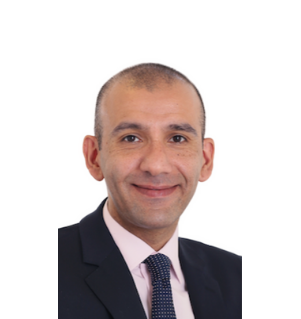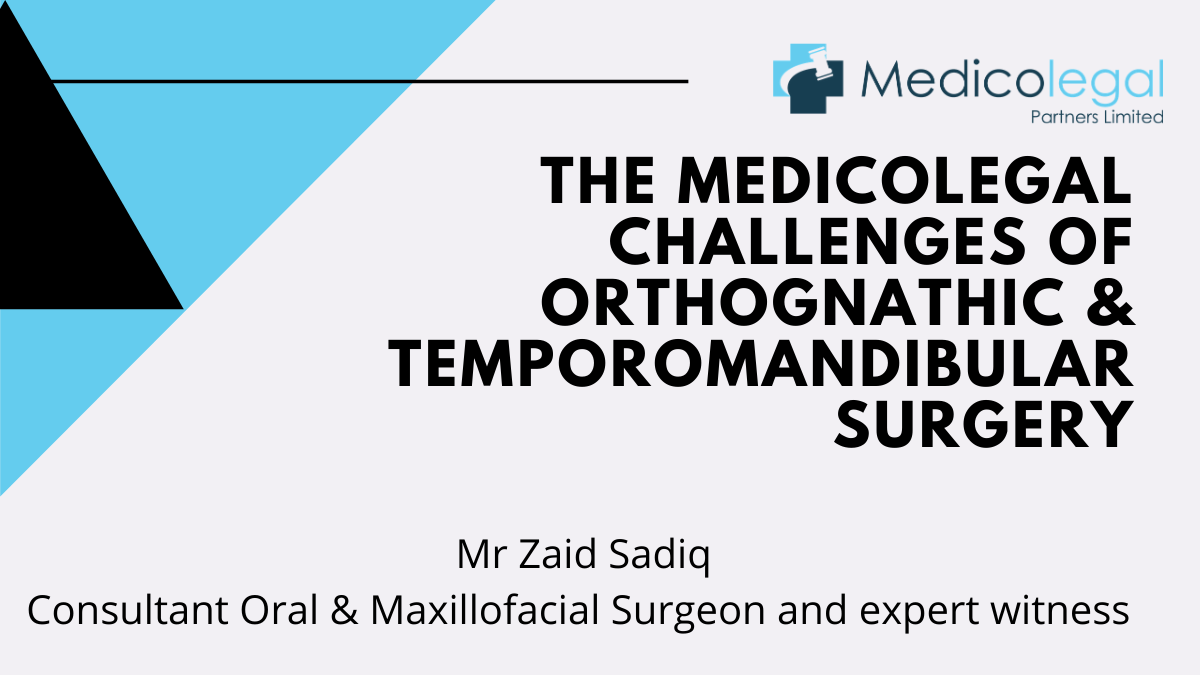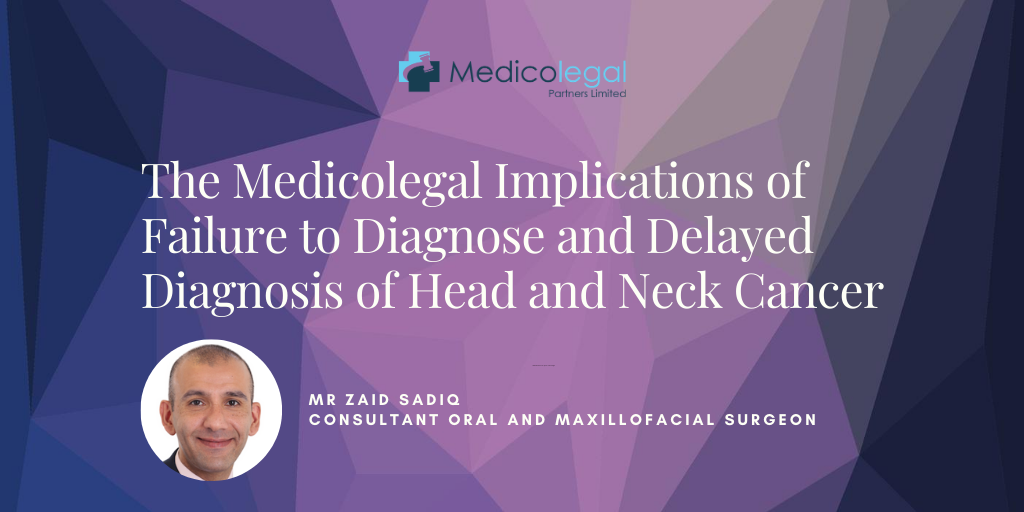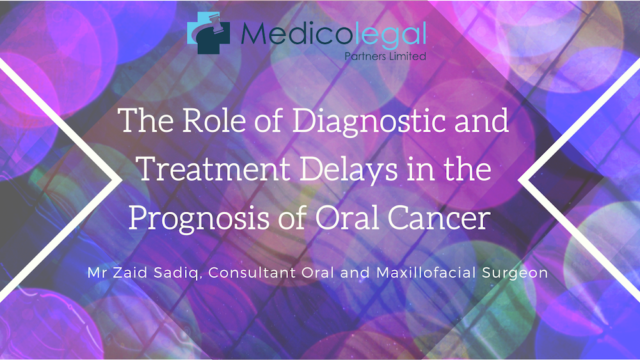A Medicolegal Perspective on Salivary Gland Diseases
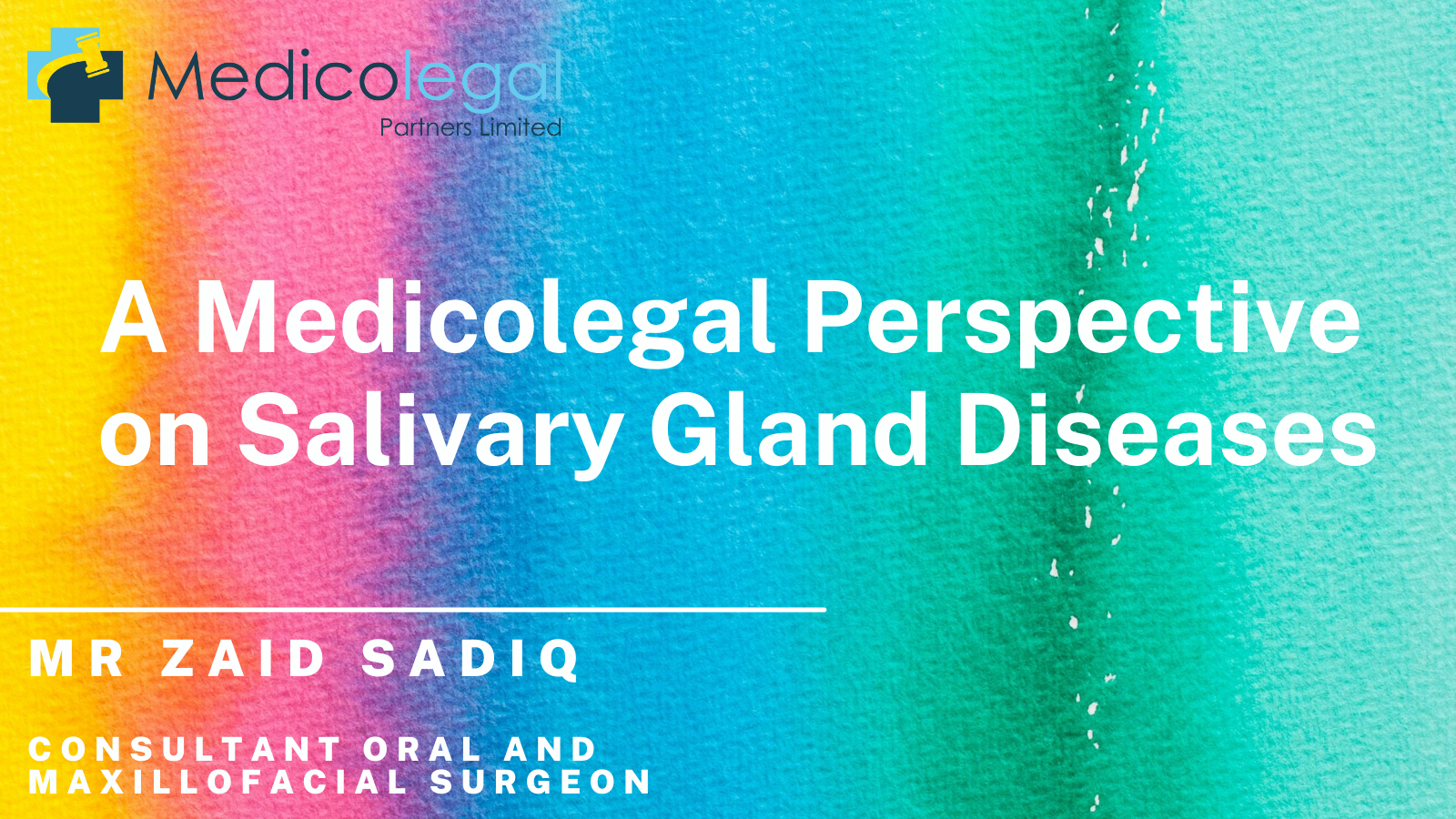
The salivary glands, which are divided into the major and minor glands, are extremely important structures. The major glands comprise the parotid, submandibular and sublingual glands. These contain acinar cells, which are chiefly responsible for the production and secretion of saliva. Saliva is essential within the mouth; it maintains oral hygiene, and facilitates chewing, taste and speech. However, the function of the salivary glands can be impaired by a variety of diseases, including cancer, autoimmune diseases, infections and trauma, and this can severely impact on the daily life of the patient. Diseases of the salivary glands are uncommon but they can be particularly challenging to diagnose as the clinical signs and symptoms associated with them can be very diverse, and there is a wide range of possible diagnoses.
Tumours in the major salivary glands are nearly always benign, but in the minor salivary glands up to 80% of tumours may be malignant. Overall, malignant salivary gland tumours account for between 1% and 5% of all head and neck cancers, and the frequency of malignancy is higher in children than in adults. The most common cancer found in the salivary glands is mucoepidermoid carcinoma. While this has the potential to occur in any salivary tissue, it is most often found in the parotid glands. As the clinical presentation of benign and malignant tumours is very similar, it can be very difficult to distinguish between them. This can have significant effects for the patient, as it will determine the treatment options and potential outcome. It is important to avoid unnecessary surgery on benign tumours, while any delay in the treatment of a malignant tumour may impact on the prognosis for the patient. However, in most patients, it is not possible to accurately determine whether a tumour is benign or malignant by clinical examination alone.
Symptoms such as palsy of the facial nerve strongly indicate the presence of a malignant tumour, and fine-needle aspiration (FNA) can be a useful confirmatory tool; studies have shown that this procedure is both highly sensitive and specific in distinguishing between benign and malignant tumours. Unfortunately, FNA is not always conclusive and cannot be performed on tumours located deep in the salivary glands. Various imaging techniques can also be used. Magnetic resonance imaging (MRI) is particularly helpful in confirming malignancy, as it provides detailed information on the location and extent of the tumour, as well as its infiltration into neighbouring tissues, such as the bones and nerves. Where MRI is unavailable or contraindicated, computed tomography can still be valuable, particularly where the tumour is inflammatory in origin. Whichever technique is used, interpretation can be very difficult and requires a lot of skill, as the clinical features vary by the histological type of tumour present.
As well as tumours originating in the salivary glands, these tissues are also common sites for the occurrence of metastases arising from primary cancers in other sites. These arise most commonly after skin cancers, but secondary tumours have also been reported following carcinomas of the renal cells, lung, breast and gastrointestinal tract. A further issue is the potential for side-effects following radiation therapy for cancer, particularly for tumours in the head and neck. Radiation damages the acinar cells, and this significantly affects the functionality of the salivary glands. A lack of saliva results in chronic dryness of the mouth, and this leads to ulceration, infections and an increase in dental caries and periodontal disease. Speech and chewing or swallowing may also be affected. This condition cannot be cured and the only available therapy is the topical application of saliva substitutes. However, these provide only temporary relief and require multiple applications over a long period of time. It is therefore vital that patients undergoing radiation therapy for head and neck cancers are made aware of the possibility of reduced salivary gland function during the consent process.
The salivary glands can also be affected by Sjogren’s syndrome, which is an autoimmune disorder. This disease mainly affects the mucous membranes and moisture-secreting glands and can result in a lack of saliva. However, another major issue with Sjogren’s syndrome is the subsequent development of malignancies, such as non-Hodgkin’s lymphoma, in affected tissues, which occurs up to 44 times more commonly than in the general population. Therefore, it is very important that this condition is identified early so that patients can be monitored, preferably by imaging. Bacterial infections of the salivary glands are relatively rare but are sometimes seen in patients who have already been debilitated by other conditions such as diabetes or immunodeficiency, or who are recovering from surgery. Again, patients in these categories need to be monitored closely to avoid complications.
Diseases of the salivary glands are relatively uncommon but diagnosis remains a challenge. In particular, differentiating between benign and malignant tumours is extremely difficult. The chances of arriving at an accurate diagnosis are improved by the use of imaging techniques and it is likely that future advances in new procedures, particularly in MRI, will make diagnosis easier.
About our expert
Mr Zaid Sadiq is a Consultant Oral and Maxillofacial (Head and Neck) Surgery. Mr Sadiq is qualified in both medicine and dentistry and can accept adult and paediatric medico legal instructions in a range of specialist areas for either claimant or defendant. Mr Sadiq has a keen interest in cancer, reconstructive surgery and tissue engineering.
Further reading:
Porcheri, C., & Mitsiadis, T. A. (2019). Physiology, Pathology and Regeneration of Salivary Glands. Cells, 8(9), 976. https://doi.org/10.3390/cells8090976
Thoeny H. C. (2007). Imaging of salivary gland tumours. Cancer imaging: the official publication of the International Cancer Imaging Society, 7(1), 52–62. https://doi.org/10.1102/1470-7330.2007.0008

